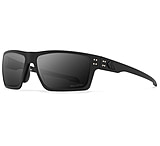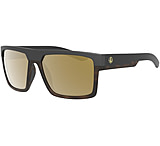Tinted lenses are just that; lenses with various tints. They are useful for everyday use while offering basic protection. Tints are available in almost any color of the rainbow.![]()
Polarized sunglasses are best for activities around water or while facing direct sunlight. How do polarized sunglasses work? The polarized film of the polarized lenses is sandwiched between two halves of the lens and cannot peel or scratch off. The polarized film acts like mini Venetian blinds that are set at a specific angle to filter the horizontal light waves that cause glare. Polarized lenses are the most effective way to reduce glare and eye fatigue.
Mirror Coating offers protection when you are in direct sunlight for extended periods of time. Think of mirror coating as a suit of armor. They aren't only cool but they do have a job to do. Mirror coating actually squints for you. Activities like boating, fishing and people of varied professions like construction workers or police officers can benefit from mirrored sunglasses if you are out in the direct sunlight.
Photochromic sunglasses adjust darkness depending on the level of UV light. Light adjusting photochromic sunglasses are a great feature. Premium brands like Bolle, Wiley X and Serengeti offer certain photochromic or transitional lenses that change with the varying conditions of light. Please note that most transitional lenses do no darken behind a windshield.
Anti-reflective coatings (AR coatings) are specifically engineered to eliminate annoying reflections and double images. AR is considered a valuable upgrade and useful for computer use or driving at night. On clear lenses AR coating is applied to both sides of the lenses. Tinted lenses have AR coating on the backside of the lens. Most high-end brands offer backside Anti-reflective coating on their polarized sunglasses.










